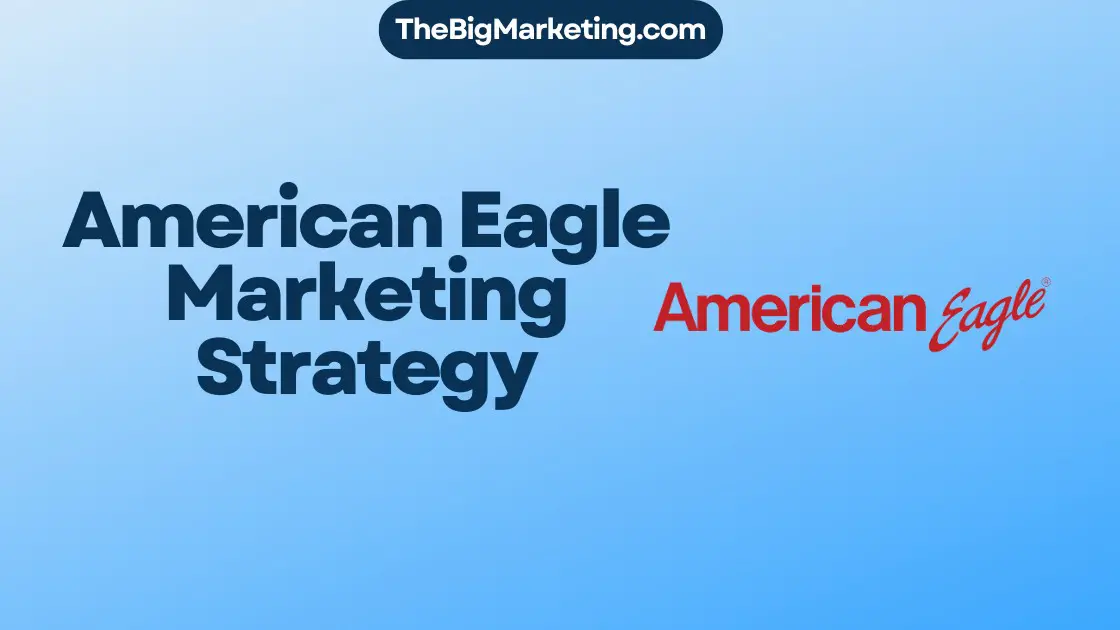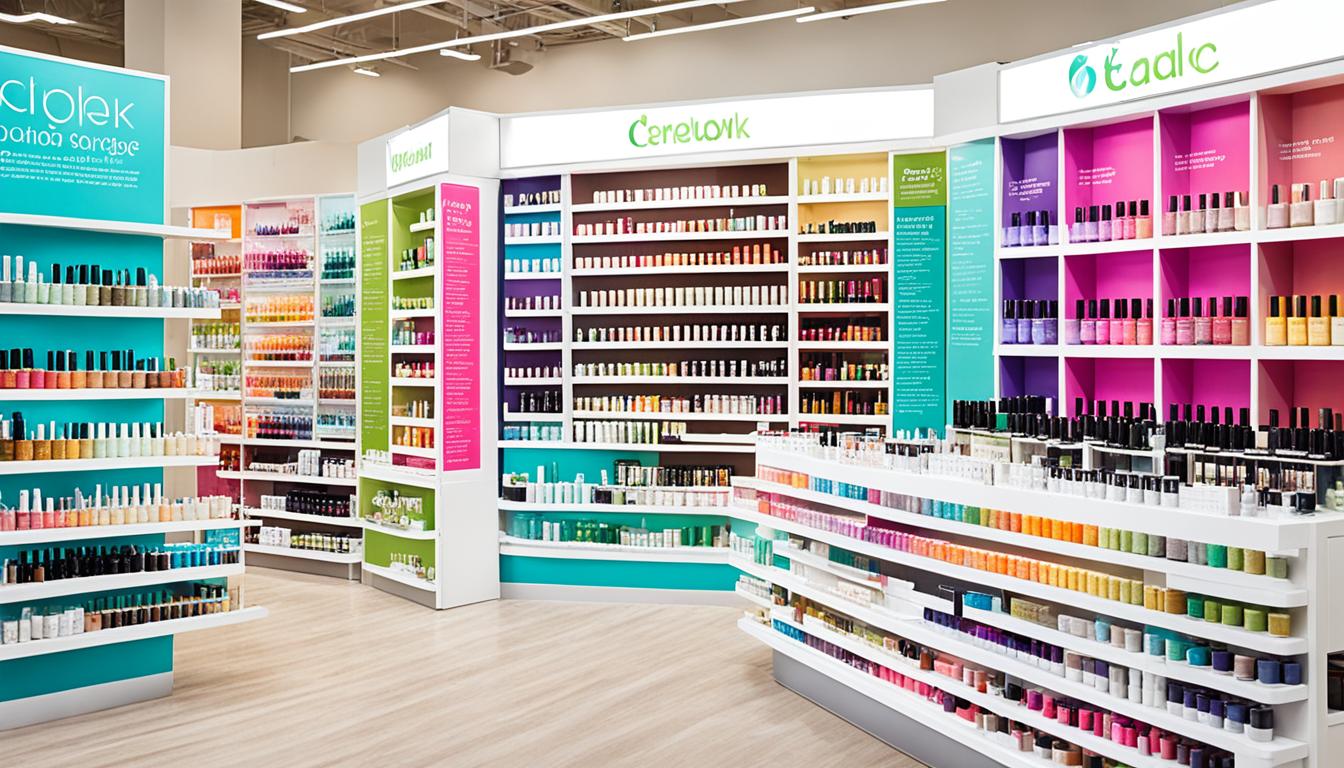Marketing is key for small business growth and making a brand known. In our digital world, small and medium enterprises (SMEs) have many affordable options to build a strong online image and connect with their ideal customers. We’ll talk about seven smart marketing strategies for small businesses and show real examples of how they’re done.
Key Takeaways:
- SME marketing is essential for small businesses to grow and increase brand visibility.
- Digital marketing offers cost-effective strategies for SMEs to establish a strong online presence.
- The following sections will explore various marketing techniques and provide real-world examples.
- By implementing these strategies, SMEs can attract and retain customers while driving business growth.
- Continuously analyzing and adapting marketing campaigns is crucial for maximizing results.
Using Flyers to Boost Your Business
Flyers are a great way to market your small business. They let you reach your audience directly and promote your products or services. By placing flyers in mailboxes, you grab people’s attention. This helps you talk to the local community effectively.
To make a flyer work, design it to catch the eye. Use interesting headlines, images, and short messages. Your flyer should include your business name, how to contact you, and a clear next step for the reader.
Adding special deals to your flyers can attract more customers. Maybe offer a discount or a free service for a short time. This not only boosts sales but also builds a good image and loyalty among customers.
Flyers and posters are not the same. Posters are seen by more people but in public places. Flyers are for targeting specific areas. They let you connect with potential customers personally, which can build lasting relationships.
Here’s what a good flyer looks like for a landscaping business:
| Front Side | Back Side |
|---|---|
|
|
Using flyers is a smart way to advertise your small business. It’s budget-friendly but can really help grow your business. Flyers allow you to spread the word effectively within your community.
Captivating Your Audience with Posters
Posters can be a key tool for small businesses looking to reach more people. By putting up posters in places like supermarkets, malls, and public areas, you grab the attention of potential customers. This doesn’t mean instant success, but with the right design and location, it can really boost engagement.
To make a poster work, it should be visually appealing and have catchy phrases. Using bright colors, bold fonts, and great graphics can make your poster pop. This makes people stop and notice it.
Adding removable tabs with discounts or special offers to your posters is a smart move. It gives people a physical reminder of your business and motivates them to act. When someone takes a tab, they have your business info and might reach out to buy something.
Combining Posters with Traditional Marketing Methods
Even though digital marketing is all the rage, old-school methods like radio ads and billboards are still valuable. These classic strategies help spread the word about your business to different audiences.
Radio ads can reach listeners who are paying attention, which helps with brand recognition and customer interest. Billboards provide a big visual that people see when they’re on the go. This can be during their daily travels or other outdoor times.
Using both posters and traditional marketing methods can really broaden your audience. The trick is to blend these strategies effectively. This way, each method’s strengths are used to the fullest, improving your chances of catching the eye of various customers.
For a visual representation of the effectiveness of posters and traditional marketing methods, refer to the table below:
| Marketing Method | Advantages | Disadvantages |
|---|---|---|
| Posters | Wide reach, eye-catching designs | Hit-or-miss, minimal control over viewer engagement |
| Radio Ads | Captive audience, brand awareness | No visual element, limited airtime |
| Billboards | Large visual impact, exposure during commutes | Expensive, limited space for detailed information |
Adding Value to Your Products or Services
For small business marketing, adding value makes a big difference. It sets your business apart from others. Offering unique benefits boosts customer happiness and brand loyalty, leading to success.
One great way to add value is by providing guarantees. Guarantees show customers you believe in your product or service. This can be a money-back promise or a warranty period. It gives customers confidence to choose you.
Giving discounts to repeat customers is another smart move. It shows you value their loyalty. This encourages them to keep coming back and helps spread the word about your business.
Referral rewards can bring in new customers. By giving rewards to customers who refer others, you use trust to grow your business. It creates a network of people who recommend your brand.
Point cards or loyalty programs are also great. They reward every purchase and make customers feel special. Such programs keep customers coming back and strengthen their connection to your brand.
It’s important to highlight these value adds in your marketing. Use your website, social media, or printed materials to share the benefits. This attracts new customers and keeps the old ones happy and loyal.
Comparing Different Value Addition Strategies
| Value Addition Strategy | Benefits |
|---|---|
| Guarantees | Builds customer confidence |
| Discounts for repeat customers | Encourages brand loyalty and repeat business |
| Referral rewards | Leverages the power of word-of-mouth marketing |
| Point cards or loyalty programs | Motivates customer loyalty and increases repeat purchases |
Leveraging Referral Networks for Business Growth
Referral networks can change the game for small businesses. They help with referrals from both customers and other businesses. This opens up new growth and expansion opportunities.
By connecting with businesses that complement yours, you can reach their customers too. This lets you tap into a wider audience.
Referral networks are great in professional circles. For example, a financial advisor might recommend an estate planning attorney, and vice versa. This can lead to more business for everyone.
To build a good referral network, it takes work. Try going to networking events and joining groups in your field. Connect with other local business owners.
Trust and teamwork are important for getting more referrals. If you refer customers to others, they’re likely to return the favor. This helps everyone involved.
Benefits of Referral Networks
Small businesses gain a lot from referral networks:
- Expanded Reach: You can reach more people by tapping into others’ networks.
- Reputation Enhancement: Being recommended boosts your credibility with new customers.
- Cost-Effective Marketing: Referrals are cheaper and more effective than traditional ads.
- Higher Conversion Rates: People trust referrals, so they’re more likely to buy.
- Long-Term Customer Relationships: Referred customers often stay loyal, increasing their value over time.
Adding referral networks to your strategy can really help your business grow. Focus on good relationships and great service to get more referrals. This can take your business to the next level.
Harnessing the Power of Follow-Ups
Follow-ups after you first meet a customer can really make them happy and boost your marketing. By doing follow-up surveys, you learn what they think of your ads and what they like. You can also put flyers or ads in mailboxes near you, targeting people who might be interested.
Following up with customers is key for small businesses to market well. It helps you keep a strong bond with your audience and make long-term connections. By reaching out after the first meeting, you show you care about their happiness and value their thoughts. This makes customers more loyal and more likely to come back.
Conducting follow-up questionnaires:
- Send a personal email to customers right after they buy something, asking how it went and for their opinion.
- Ask specific questions about your ads, like if customers found them eye-catching or useful.
- Make the questionnaire quick and simple, with choices and a place for extra comments if they want.
This helps you collect important feedback from customers. You can then use this info to better your marketing and messages.
Distributing flyers and promotional materials:
- Look for neighborhoods or areas that have people who might like your product or service.
- Make interesting and nice-looking flyers that talk about what’s good about what you offer.
- Add a way to act on it and how to contact you, making it simple for interested folks to get in touch.
- Put these flyers in mailboxes or on bulletin boards in those areas to reach the right people.
By using these follow-up methods and other marketing like flyers, you can make your business more seen and successful.
| Benefits of Follow-Ups | Benefits of Flyers and Promotional Materials |
|---|---|
| Improves customer satisfaction | Targets specific neighborhoods and audience groups |
| Provides valuable feedback on ad campaigns | Increases brand visibility |
| Strengthens customer relationships | Generates leads and potential customers |
| Enhances customer loyalty and repeat business | Drives sales and conversions |
Embracing Cold Calls for Business Growth
Cold calling can scare people but it works well for small businesses. They can call or visit potential customers to introduce their services or products. This way, they create a personal bond and clearly explain what they offer.
For cold calls to work, you need to be ready to change your approach and be creative. This helps you connect with potential customers and handle any objections they might have.
Taking the First Step: Cold Calls
Start with a good list of people you think will be interested in what you’re offering. Understand who they are and what they need. Tailor your call to talk about how your business can solve their problems or meet their needs.
Talking about what makes your business special is important. Show them how you’re different and how you can help them.
Cold calls are great because you can immediately answer any questions or concerns. You can change your pitch based on what the customer says or how they react.
Warm Calls: Building on Existing Connections
Warm calls are another tool for marketing. You call people who already know your business. This could be past customers or people who have shown interest before. The goal is to keep the relationship going and find more ways to work together.
With warm calls, you should remind them of the good experience they had with you. Adding a personal touch makes them trust you more, and they might want to buy again or engage more with your business.
A Combination of Traditional and Digital Outreach
Using both cold calls and digital strategies is a smart move. Digital methods like emails, social media, and online ads can reach more people. This supports your cold calling by creating more chances to find customers.
Warm calls and cold calls work best together. They help you keep your current customers and find new ones. Mixing face-to-face efforts with online campaigns helps small businesses grow.
| Benefits of Cold Calling | Challenges of Cold Calling |
|---|---|
| Direct and personal approach | Rejection or negative responses |
| Immediate feedback | Time-consuming |
| Potential for building strong relationships | Difficulty in reaching decision-makers |
| Opportunity to address objections | Adapting to different customer personalities |
Optimizing Your SME’s Online Presence
In this digital era, a strong online presence is key for small and medium-sized enterprises (SMEs) wanting to grow. By building and refining your digital footprint, you can greatly boost your brand, reach more customers, and grow your business. We will explore crucial strategies for improving your online marketing efforts.
Creating an Engaging Website
A top-notch website is crucial for your SME’s online image. It is where customers find key info about your business, like your address, hours, and how to contact you. Making your website search-engine friendly with the right keywords and content can pull in more visitors. Also, make sure your website is easy to navigate, works well on mobile devices, and is simple to use.
Harnessing the Power of Social Media
Social media is a vital tool for reaching your audience online. It helps SMEs build a following, interact with customers, and boost website traffic. Find out where your audience spends their time, be it Facebook, Instagram, or LinkedIn. Create content that suits each platform. Posting regularly, sharing useful tips, and answering questions can establish trust and show your industry expertise.
Leveraging Content Management Systems
Content management systems (CMS) like WordPress or Drupal simplify online marketing. These systems offer easy-to-use interfaces and templates for website creation and content publication. A CMS lets you keep your website’s content fresh and engaging. Using blogging to share your knowledge and what makes your SME special is a powerful strategy.
Mastering Search Engine Optimization (SEO)
SEO is crucial for making your SME more visible online and drawing in web traffic. Find and use keywords your audience is searching for throughout your website. Speed up your site, optimize images, and make sure it’s mobile-friendly. This improves user experience and search ranking. Track your SEO progress with tools like Google Analytics to fine-tune your approach.
Tracking and Measuring Online Marketing Efforts
Tracking your online marketing is key to knowing what works. Use Google Analytics to monitor your site traffic and learn about your visitors. Look at bounce rates, conversion rates, and how long people stay on your site. Use this info to tweak your marketing plans, making sure your SME’s online presence is as strong as it can be.
Conclusion: Unlocking the Potential of SME Marketing
Effective SME marketing strategies are crucial for small businesses. They help tap into their full potential. By using both traditional and digital marketing, SMEs can reach more people. They can also build strong customer loyalty and boost sales.
To succeed, SMEs must constantly analyze and improve their strategies. This helps them stay competitive and achieve better results.
SMEs need to blend traditional and digital marketing methods. Traditional approaches, like using flyers and making cold calls, are still useful. But, it’s also critical to use digital platforms.
Social media marketing is vital for SMEs. It helps small businesses connect with their audience. Platforms like Facebook, Instagram, and Twitter are great for creating content and running ads. They also enable SMEs to chat with their customers.
SMEs should always check how well their marketing is working. They must be ready to change their plans to get the best outcomes.
In summary, the right marketing strategies can help small businesses succeed. A mix of traditional and digital marketing is key. With good planning and execution, SMEs can grow significantly. They can also become well-known in their market.







